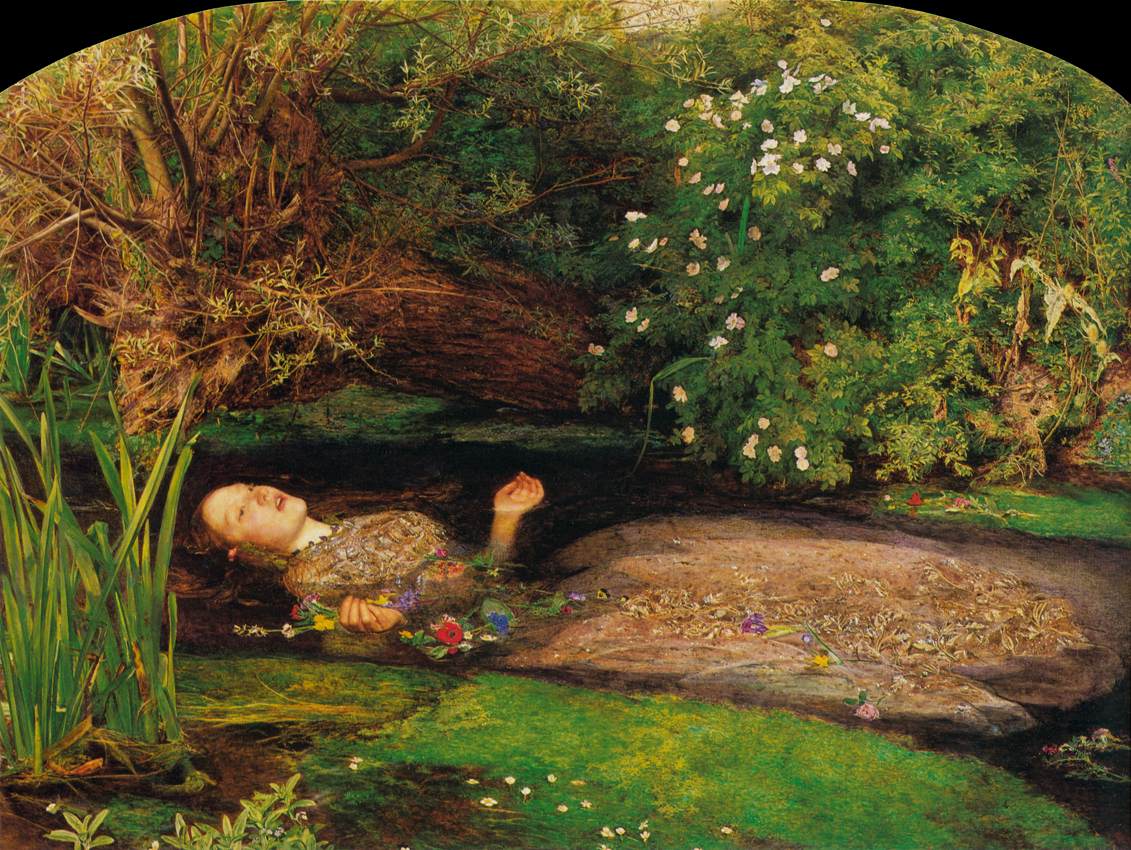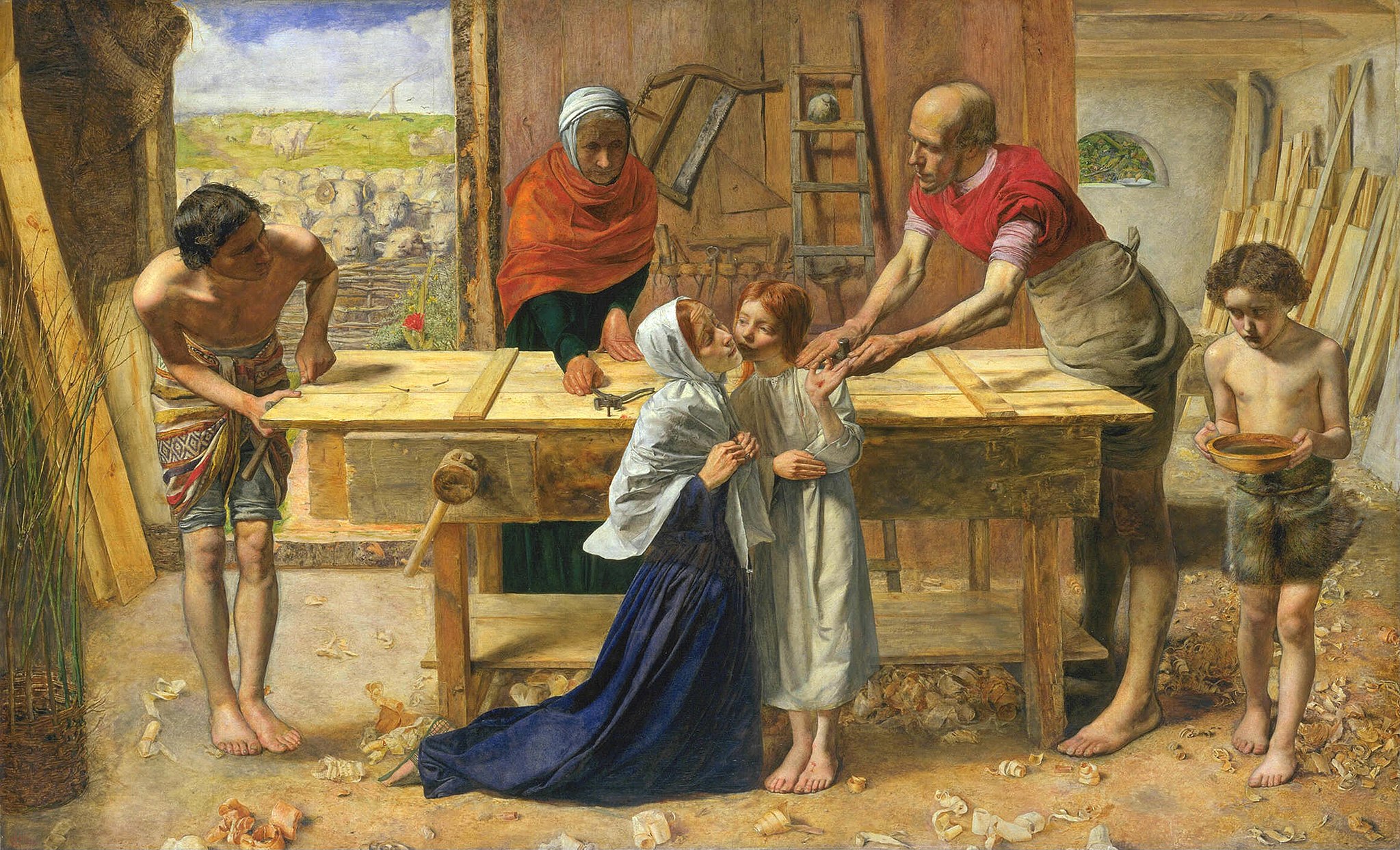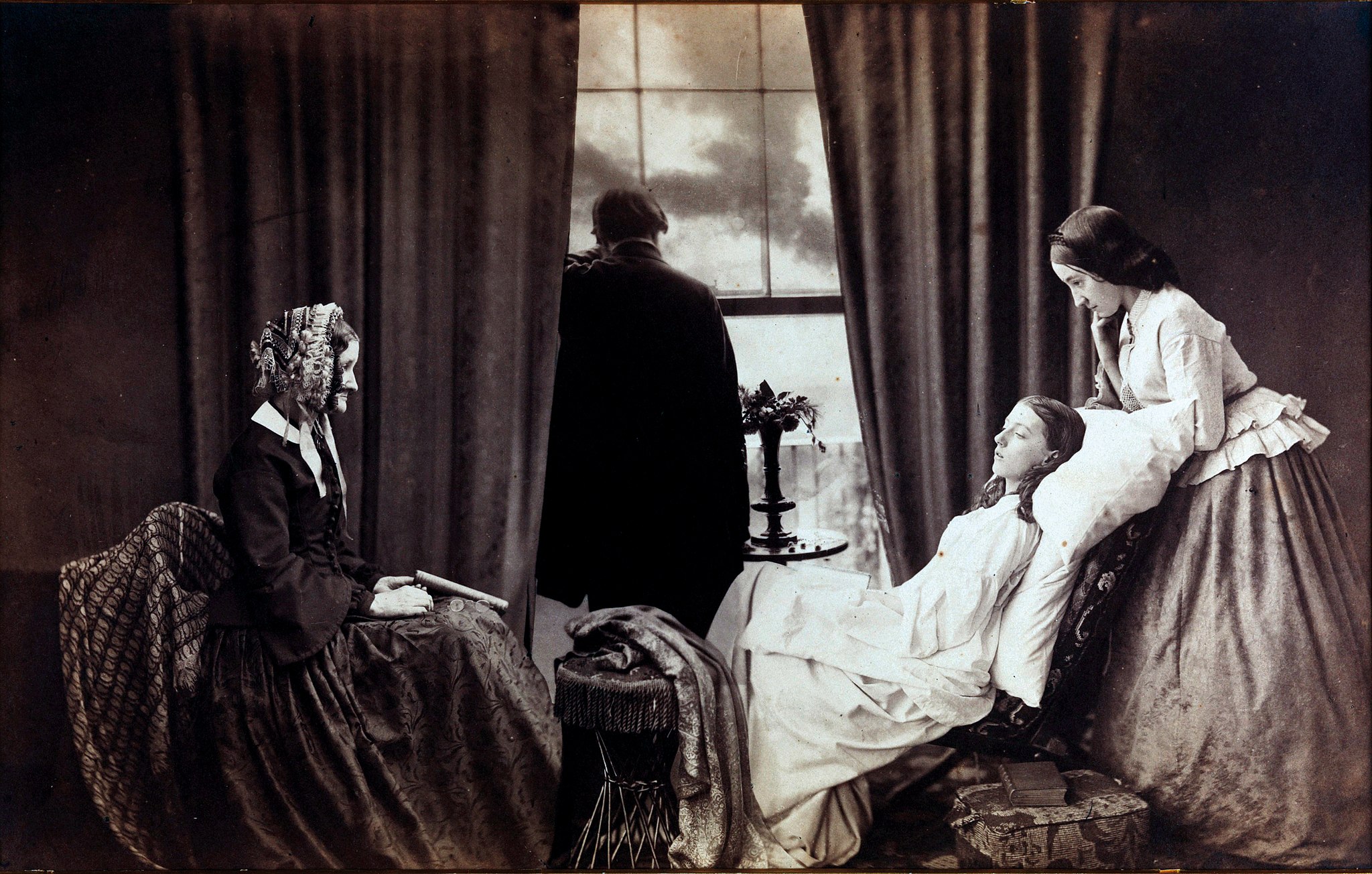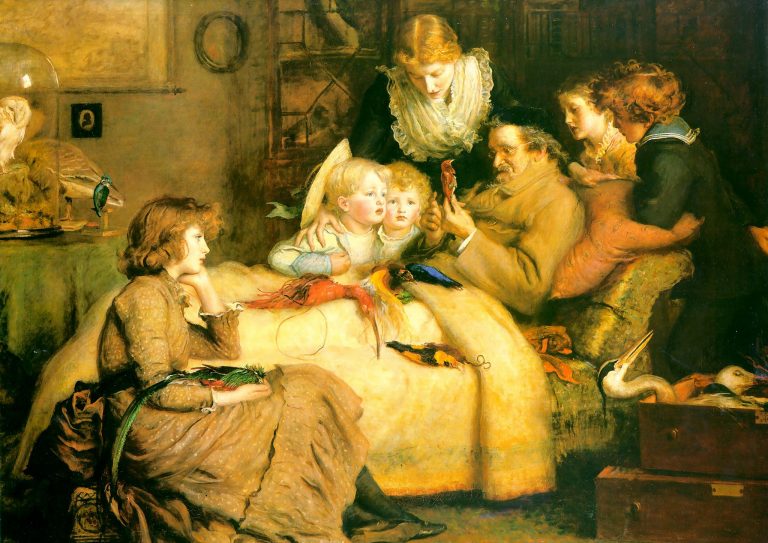The Pre-Raphaelite Brotherhood (also known as the Pre-Raphaelites) was an art movement that appeared in 1848, after the industrial revolution. It was the same year that Marx’s Communist Manifesto was published in London, and revolutions erupted across Europe. The brotherhood considered themselves to be a “reform” movement, seeking to stem the socialist leanings towards progressive modern art, and return to fine detail, rich color and complex compositions of the 15th century Medieval Period.
William Holman Hunt, John Everett Millais, and Dante Gabriel Rossetti were among the English painters that banded together and founded the group. A short time later, artists such as William Michael Rossetti, James Collinson, Frederic George Stephens, and Thomas Woolner joined the three founders to form a seven-member “brotherhood.”
Modelled after the Nazarene Brotherhood, the Pre-Raphaelite Brotherhood rejected the Royal Academy’s promotion of eclecticism, sentimentality, and sensationalism, believing that these practices were eroding the standards for fine art. They took the art of the late medieval period as something to emulate, focusing on morality, religious subject matter, and great attention to detail.
Sombreness, candor, and an appreciation for natural truth were injected into the artists’ works in order to convey their message of truth and morality. They aspired to change art by opposing the mechanical method of Raphael and Michelangelo’s successors, including the Mannerists who created work with exaggerated features such as unusual color, elongated limbs, and strange poses.
The painters sought to alter the flow of history, which they believed favored a limited range of moral subjects or conventional notions of beauty inherited from the High Renaissance. They argued that artists should offer a model for portraying nature and the human body truthfully rather than idealistically, and they found the collective confederations of medieval artisans preferable to mid-nineteenth-century academic methods.

Success
You are now signed up for our newsletter
Success
Check your email to complete sign up
The Pre-Raphelites were influenced by John Ruskin (1819 – 1900), a Victorian-era English essayist, philosopher, and art critic, who also supported anything that challenged the status quo. Pre-Raphalite art followed the famous statement by Ruskin, in which he exhorts his students to “go to nature in complete simplicity of heart… rejecting nothing, choosing nothing, or scorning nothing; trusting all things to be just and good, and constantly delighting in the truth.” Ruskin praised the pre Raphaelites for their advancements and contributions to English landscape painting, working in Plein air with botanical precision and painstaking detail.
The Brotherhood admired the intricacy, color, and complex arrangement of Quattrocento Italian and Flemish paintings, and devised a method of painting thin glazes of color over a wet white ground in order to preserve the jewel-like transparency and purity of colors seen in Quattrocento art. Their focus on color brightness was a response to previous British painters’ overuse of bitumen. Bitumen creates muddy dark areas, which the Pre-Raphaelites detested.
The artists opted to emulate the aesthetics of the late medieval English stories and early Renaissance Europe. They became well-known, and eventually criticized for their preoccupation with moral issues like justice and piety, which they drew from contemporary society, Shakespeare, the Middle Ages, and the Bible.
While the painters regarded the Renaissance as a marvel, they felt it had taken a wrong turn. They criticized the Royal Academy for allowing painting standards to slip. Sir Joshua Reynolds (1723–1792,) the founder of the English Royal Academy of Art, was dubbed “Sir Sloshua,” because they thought his broad approach was sloppy and formulaic.
Ultimately, the group came under fire for their pietism, archaizing compositions, strong focus, lack of shadows, flattened forms, and wet-white technique. Their aspirations for metamorphosis were dashed, and they opted to sign their work with “PRB” rather than their given names.

Rossetti’s Ecce Ancilla Domini and Deverell’s Twelfth Night were featured in the 1850’s Free Exhibition, while The Royal Academy concentrated on Hunt’s ‘A Converted British Family Protecting a Christian Priest from Druids’ and Millais’s ‘Christ in the House of his Parents,’ of which the latter was deemed immoral. The painting was severely criticized by Charles Dickens, who claimed Millais made the Holy Family look like alcoholics and slum-dwellers, adopting contorted and absurd “medieval” poses.
In May 1851, Ruskin backed the Brotherhood and sent letters to The Times supporting Millais’s painting. However, the painting created such a controversy that Queen Victoria requested that it be brought to her for personal assessment. Collinson resigned from the group after the humiliating reaction, and Rossetti swore never to exhibit again. Woolner went to Australia from the United Kingdom in 1852. Hunt traveled to the Holy Land in January 1854 to hone his talents as a religious painter.
Ironically, Millais was named an Associate of the Royal Academy in 1853, thus “ending the PRB,” as Rossetti put it. He was eventually elected President of the Royal Academy, the same organization against which he had fought so valiantly.
Though the pre Raphaelites’ fraternity was disbanded, their studies and the moralistic ideals they upheld were not forgotten. Furthermore, Ruskin’s view of natural themes as an infallible subject demonstrated the potential of art and design coexisting.
After the Pre-Raphaelites
Some of the post-pre-Raphaelites forged close relationships with the 1870s Aesthetic and Decadent_movements. Works by Félicien Rops and Joris-Karl Huysmans’ book Against Nature (1884) are prominent examples of the movement. Both violated the Pre-Raphelites basic ideals of naturalism and non-idealism. It placed aesthetics over substance; aiming to elevate taste, beauty, and self-expression; and creating “art for art’s sake.” The Aesthetic movement shaped modern art in the twentieth century, rejected art’s moral duties, and stressed self-expression.

Fine art photography
Pre-Raphaelitism and early British fine art photography have been the subject of many exhibits in recent times. A public symposium, “Truth to Nature: British Photography and Pre-Raphaelitism,” with lectures by David Coleman, Duncan Forbes, Laura Henrickson, Andrew Szegedy-Maszak, and Malcolm Warner, was held in 2011 at the British National Gallery.
There is little doubt that the Pre-Raphaelites inspired several photographers, including Roger Fenton (1819 – 1869), a British photographer recognized as one of the first war photographers, and Julia Margaret Cameron, (1815 – 1879,) who was an irreplaceable representative of pre-Raphaelite photography. She was also at the heart of the intellectual and artistic movement (related to the Pre-Raphaelites), which was unique for a British lady at the time. Included was Henry Peach Robinson (1830 – 1901, an English pictorialist photographer renowned for inventing combination printing.
These pioneers elevated photography’s mechanical representation of nature to the realms of fine art and painting. Artists and photographers often cooperated and were inspired by the same literature, medievalism in dress and décor, and a love for capturing the light and detail of the natural world, showing that great art is, at its core, essentially, about life.
Ila Bonczek contributed to this report.















